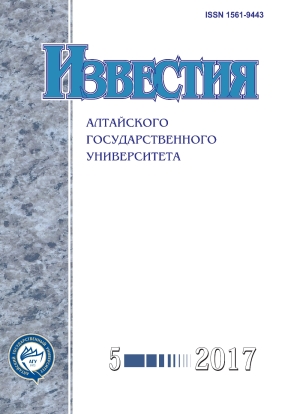Administrative Coercive Methods to Convert the Old Believers into the Community of Religion in the Tomsk Province
Abstract
Using archival sources, the author examines the urgent problem of the spread of common belief and, accordingly, the transition conditions of the Old Believersin it. Common Faith Church was one of the most common methods of struggle of the government and the official Orthodox Church with "developing a split." In the 19th century the Tomsk province was able to create 13 Churches of Common Faith. However, the conversion of the Old Believers in the Church of Common Faith as well as keeping people there often wore a voluntative character. Active use of administrative and police apparatus allowed local officials and clergy of the Synod of the Church to quickly form the Parish of Common Faith, to achieve official recognition, honors and state cash prize. Common Faith Church was supposed to exist in the alien to it official Orthodoxy system with its anti-split” paradigm. The Common Believers were severely restricted in their rights. They resented their dual status: they were neither nikonians, nor Old Believers. Accordingly, the Common Faith did not receive the expected wide- scaled spread. On unconditional rights only a small part of the Old Believers accepted the Common Faith.
DOI 10.14258/izvasu(2017)5-08
Downloads
Metrics
References
Беликов Д.Н. Томский раскол // Известия Императорского Томского университета. — Т. 18. — Томск, 1901.
Иванов К.Ю. Единоверие как способ борьбы со старообрядцами (на примере Томской епархии) // Культурное наследие Азиатской России. — Тобольск, 1997.
Государственный архив Томской области (ГАТО). — Ф. 234. — Оп. 1. — Д. 22.
Томская губерния. Список населенных мест по све дениям 1859 г. — СПб., 1868.
Из истории раскола в Томской губернии // Исторический вестник. — СПб., 1901.
Томские епархиальные ведомости. — 1884. — №21-22.
Отчет Братства Святителя Димитрия митрополита Ростовского в г. Бийске за 1887/8 гг., четвертый отчетный год // Томские епархиальные ведомости. — 1889. — №3.
Чудновский С.Л. Раскольники на Алтае (выдержки из дневника) // Северный вестник. — 1890. — №9.
Юновидов В. Краткий очерк состояния раскола и единоверия в Алтайской, Ануйской, Алейской, Шима-наевской, Владимирской волостях Бийского округа // Томские епархиальные ведомости. — 1887. — №1.
Раскол в томской епархии в 1895-6 гг. // Томские епархиальные ведомости. — 1897. — №17.
Записка, читанная Бийским отделением Братства св. Димитрия // Томские епархиальные ведомости. — 1889. — №22.
ГАТО. — Ф. 3. — Оп. 51. — Д. 148.
ГАТО. — Ф. 170. — Оп. 2. — Д. 319.
Гонения на раскол в Западной Сибири // Неделя. — 1878. — №38.
ГАТО. — Ф. 170. — Оп. 2. — Д. 55.
Ильин В.Н. Антистарообрядческая политико-правовая парадигма Российской империи // Religion — Science — Society: Problems and Prospects of Interaction : Materials of the VI International Scientific Conference on November 1-2, 2016. — Prague, 2016.
Copyright (c) 2017 В.Н. Ильин

This work is licensed under a Creative Commons Attribution 4.0 International License.
Izvestiya of Altai State University is a golden publisher, as we allow self-archiving, but most importantly we are fully transparent about your rights.
Authors may present and discuss their findings ahead of publication: at biological or scientific conferences, on preprint servers, in public databases, and in blogs, wikis, tweets, and other informal communication channels.
Izvestiya of Altai State University allows authors to deposit manuscripts (currently under review or those for intended submission to Izvestiya of Altai State University) in non-commercial, pre-print servers such as ArXiv.
Authors who publish with this journal agree to the following terms:
- Authors retain copyright and grant the journal right of first publication with the work simultaneously licensed under a Creative Commons Attribution License (CC BY 4.0) that allows others to share the work with an acknowledgement of the work's authorship and initial publication in this journal.
- Authors are able to enter into separate, additional contractual arrangements for the non-exclusive distribution of the journal's published version of the work (e.g., post it to an institutional repository or publish it in a book), with an acknowledgement of its initial publication in this journal.
- Authors are permitted and encouraged to post their work online (e.g., in institutional repositories or on their website) prior to and during the submission process, as it can lead to productive exchanges, as well as earlier and greater citation of published work (See The Effect of Open Access).








